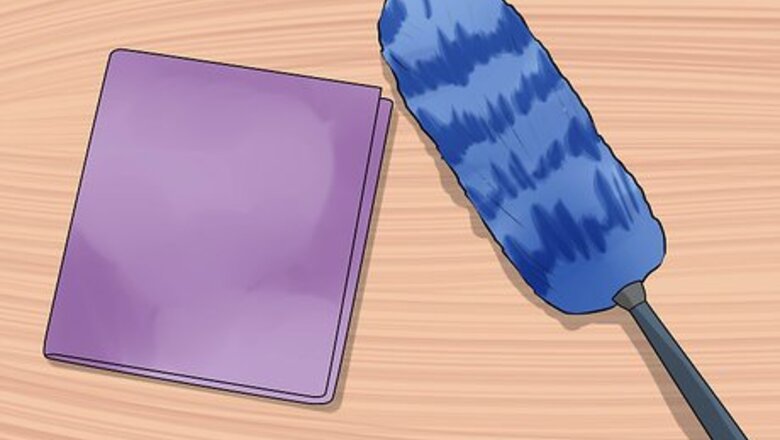
views
Dusting Efficiently
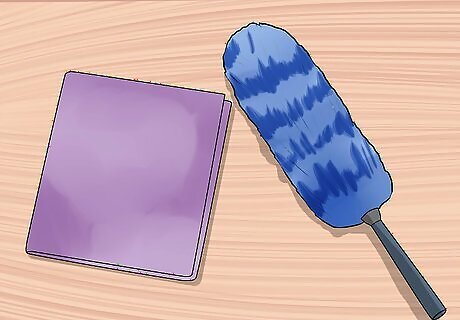
Choose the right supplies. Many dust removal products on the market don't do much in the way of removing dust. Feather dusters and dry rags do not actually get rid of dust. They just move it around. You need to go for high quality microfiber rags, as well as top notch dusting wands. A dusting cloth should be sticky. Look for microfiber cloths that clings to your skin when you examine them. Dusting wands should not have feathers on the end. You want a wand with a microfiber covering. Make sure to examine the wand prior to purchase. Make sure you can feel the fabric clinging to your hand.
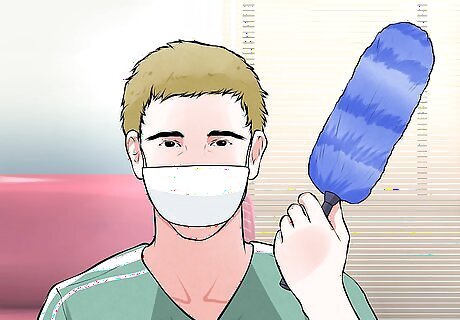
Protect yourself from irritation. This is especially important if you have allergies and asthma. If you end up sneezing and coughing, this can inhibit your ability to remove unwanted dust from your home. Wear a face mask when cleaning, especially if your home is very dusty.
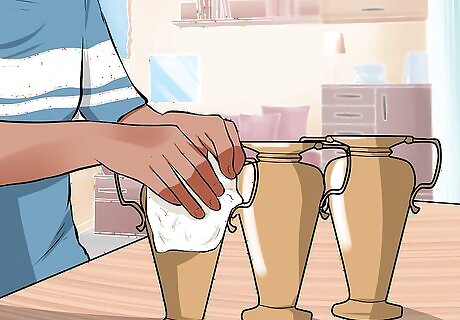
Use a dusting cloth efficiently. Unfold your cloth and place it on the dusty item, covering as much of the surface as necessary. With a high quality dusting rag, you should not need any additional sprays. Glide the cloth over the surface while applying light pressure. Try to move in one direction for every swipe. If the rag gets saturated with dust, turn it over and use on the other side. Dust any surface in your home that's accrued dust. You should wash your dust cloths in the laundry after each dusting session. Wash them separate from other clothing items and use a plain detergent.
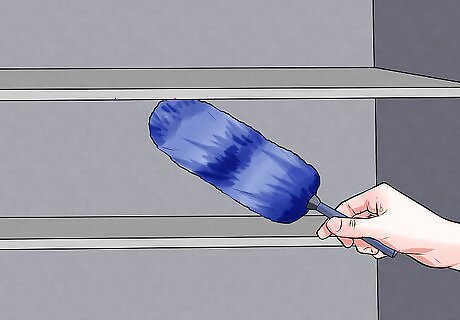
Make use of a dusting wand. A wand is best used to reach hard-to-reach places in your home. Things like ceiling fans, tall cabinets, and the tops of bookshelves can be dusted with a dusting wand. Extend the wand as necessary to remove unwanted dust, using slow back and forth motions. You may want to set a tarp or dirt rag on the floor to catch any dust that falls during the dusting process. Vacuuming or sweeping afterwards is important.
Removing Dust from Difficult Places
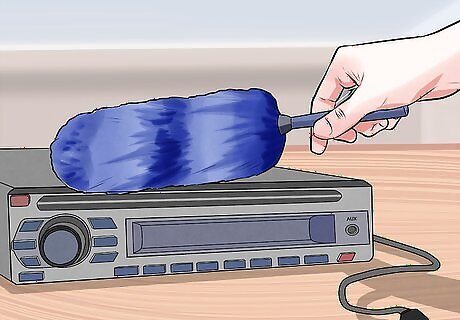
Dust off electronics. These are a major source of dust that are often overlooked in the home. DVD players, stereos, video game consoles, and other electronic gadgets can attract a lot of dust. Unplug the equipment before dusting. You can swipe a microfiber cloth over all sides of these surfaces to remove dust. If there is any dust in cracks and crevices of larger machines, use a long-handled dusting wand to remove. In addition to dusting off the surface of these devices, check for dust around them. Vacuum dust from along cords and vents, as a lot of dust tends to gather in these places. Some people may use compressed air to get dust out of electronics. This may be safe for some electronics, but you should always read the manufacturer's instructions first. Compressed air may be too strong for certain electronic devices.
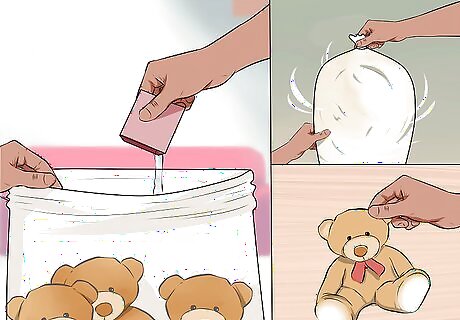
Get dust off of plush toys. If you have kids, or collect plush toys as hobby, these can be a major source of dust. As regular machine washing can cause wear and tear to toys, there's a simple way to remove dust without throwing them in with the laundry. Baking soda can actually draw out soil and dust from these items. Put all toys into a large plastic bag. If you have a lot of toys, you may need more than one. Pour one cup of baking soda into the bag. Tie the top of the bag and shake it well. Take the bag outside. Remove the toys one by one, and shake them off as you go to remove any clumps of baking soda.
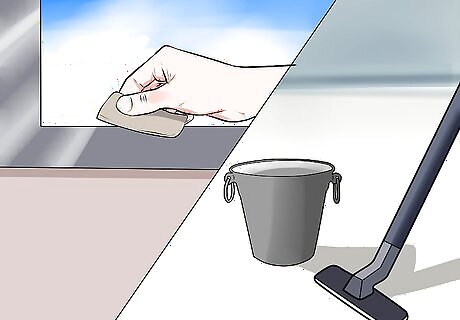
Remove dust behind appliances. Dust under large appliances can actually be a major health concern. In addition to dust, other debris can gather, attracting bugs and mice. Move the appliances away from the wall and unplug them. Use a slightly damp sponge mop and mop along the corners of the wall, removing dust and debris. Wipe the remainder of the floor with hot, soapy water. Press the appliance back against the wall and plug it back in. Remove dust from the corners of cabinets. These are other areas that are often neglected as they're difficult to reach. You can use a makeup brush or a paint brush to sweep dust out of these areas. Then, remove the dust you swept with a microfiber cloth.
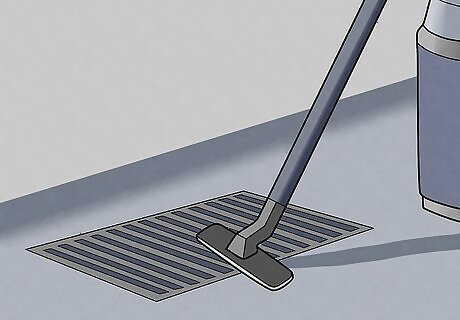
Get dust out of vents. Vents can cause a buildup of dust in the air, so it should be removed. You can use a soft-brush vacuum attachment or an electrostatic mop to remove dust from these places. Run the mop or the vacuum over the vents, drawing out any dust. Wipe down the vent with a damp microfiber cloth. If there are any removable filters, such as an air conditioning filter, remove it and wash it in warm, soap water. Let it dry before putting it back in place.
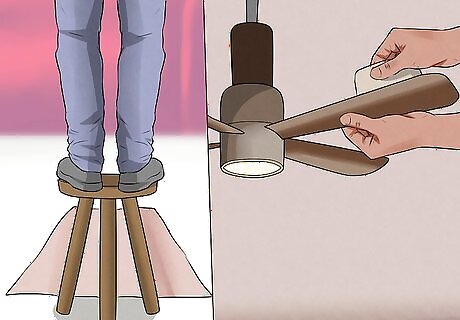
Eliminate dust on a ceiling fan. You should first place a drop cloth or newspapers on the floor around the lamp. A lot of built up dust will fall off of the ceiling fan. Take a damp paper towel and a step stool. Stand on top of the stool and gently wipe down the built up dust on the fan's blades. Make sure the device is turned off first. This is one case where a mild cleanser should be applied to a microfiber cloth, as the dust will likely be stuck on. Wet your cloth with a mild cleanser and gently wipe off the remaining dust on the fan's blades.
Reducing Dust in Your Environment
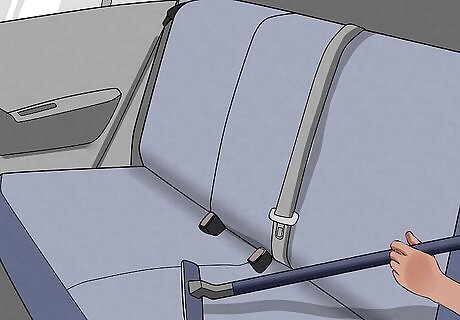
Keep your car free of dust. Dust can build up in a car in addition to inside your home. Regularly wipe down the interior of your car with a wet microfiber cloth. Pull out any floor mats and shake them out as well to remove lingering dust and debris. You should also make an effort to eliminate trash in your car. Do not leave garbage or old food in your car. It's a good idea to vacuum your car once in awhile to remove built up dust.
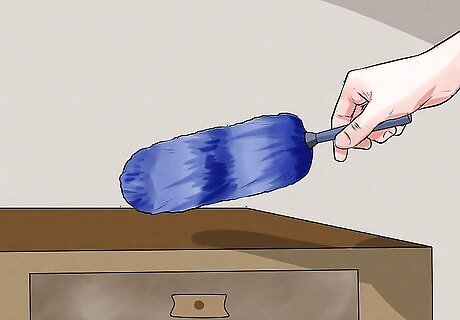
Avoid dust in your workspace. Dust can also build up in a workspace, so do not rely entirely on the cleaning crew to keep your area dust free. Bring some dusting materials from home and dust your workspace at the end of each day. Wipe down the furniture and quickly sweep under your desk regularly. You should also eliminate clutter, which can lead to dust. Keep your papers stacked neatly and throw out any old memos or letters you no longer need.
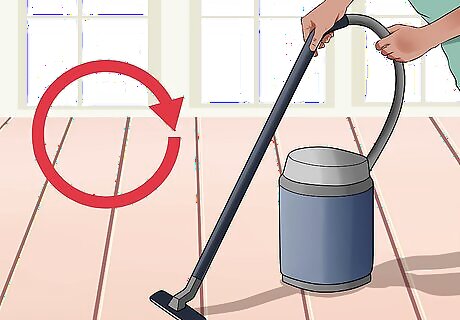
Clean and vacuum regularly. This should be done at least once a week. Many people are surprised how quickly dust builds up. You should get a vacuum with a quality filter to make sure you remove as much dust as possible. In addition to vacuuming the carpet, vacuum furniture. Get the crooks and crevices of your chairs and sofas. These areas can also contain dust. If you have pets, they're sure to be covered in pet hair and dander.
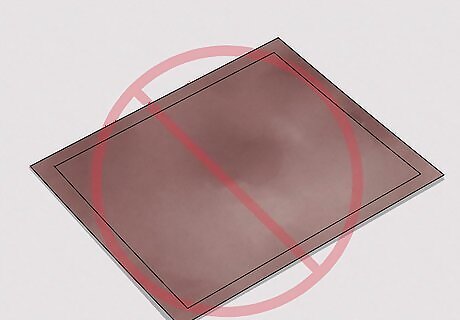
Consider ditching your carpeting. Carpeting is not ideal if you have sensitivities that make it difficult to deal with dust. Dust control is extremely difficult if you live in a home with carpet as all carpets trap dust. Hardwood, tile, or linoleum floors are a better option when it comes to reducing dust. If you have to have carpet, stay away from shag carpeting. This type of carpeting is notorious for making dust removal difficult.
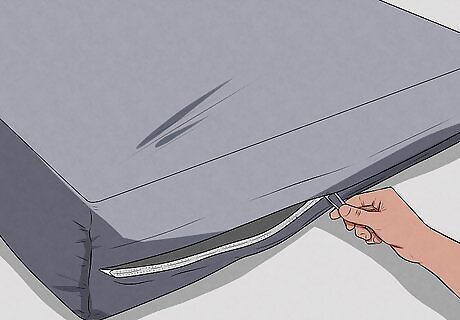
Protect your mattress from dust. Cover your mattress in a zippered, dust-proof, or allergen free cover. When cleaning bed springs, do so outside your bedroom to avoid getting dust on your bed. Synthetic mattress pads and pillows may work better when it comes to reducing dust. If a second bed is added to the room, it should also have a cover.
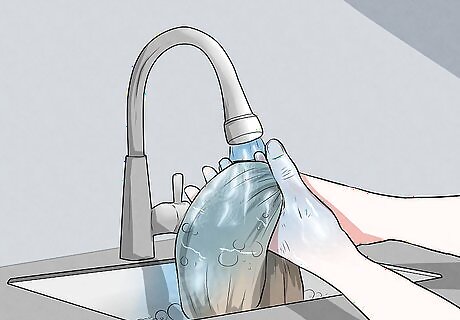
Wash your sheets regularly. All material in your bed should be washable. Wash sheets, blankets, and pillow cases at least once a week to prevent dust build up. Do not buy any fuzzy materials for your bed. They are difficult to wash and may attract more dust. Feather and wool-stuffed materials are also hard to wash, and more prone to gathering dust.




















Comments
0 comment